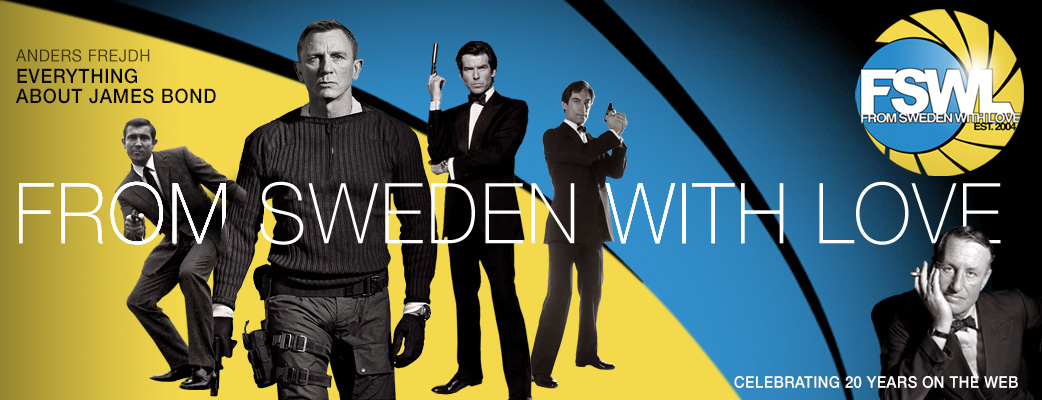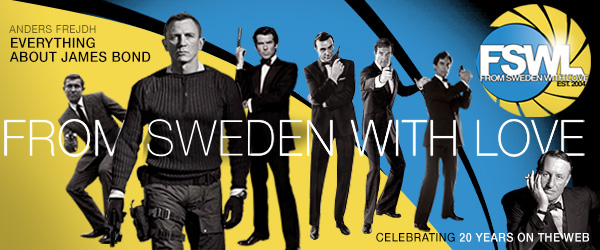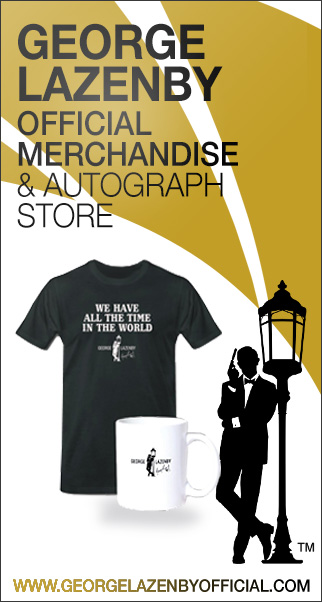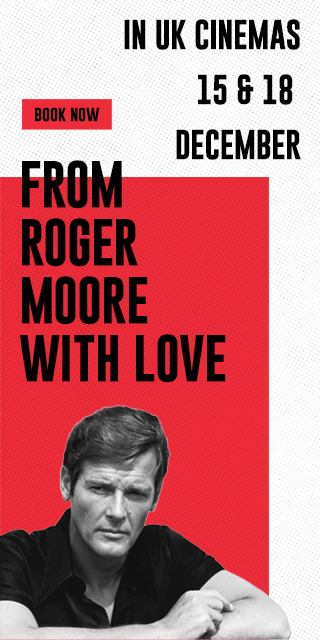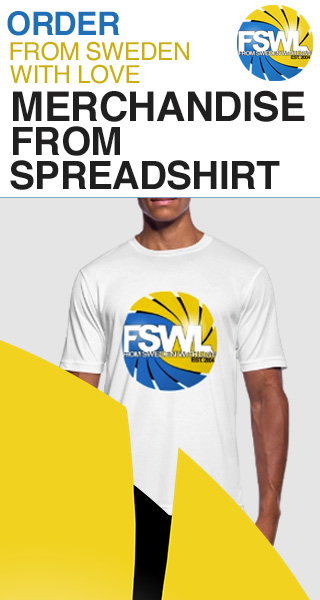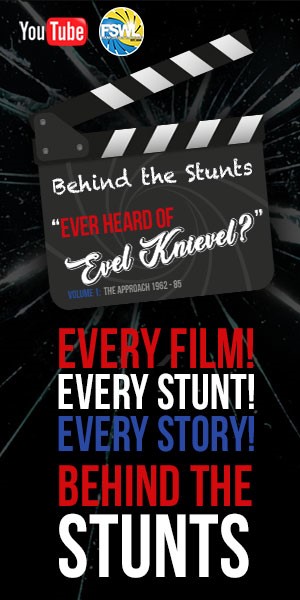Website last updated: 10-6-2025
Home
Book & Film reviews
Competitions
FSWL Merchandise
In Memoriam
Interviews
James Bond 007 articles
James Bond 007 collection
James Bond 007 films
James Bond 007 games
James Bond 007 literature
James Bond 007 news
James Bond 007 products
James Bond 007 shop
James Bond 007 stars
James Bond Fan Clubs
Swedes in the Bond films
50 Years of Film Posters and Photographs exhibition
By: Anders Frejdh
Published:
2012-09-10
2012-09-10
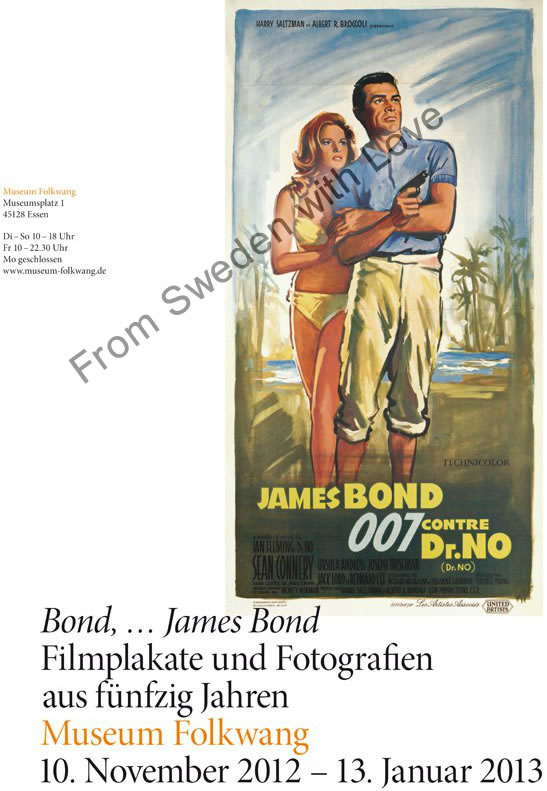
To mark the 50th anniversary of the James Bond film series, the German Poster Museum at Museum Folkwang is showing in eight thematic sections around 200 posters and photographs connected with the worldŌĆÖs most popular secret agent. 1962 saw the first movie, 2012 sees the launch of the new film Skyfall (2012). Over the years James Bond films have become comprehensive cultural and historical documents and an important part of Pop culture. Posters and photographs reflect the way that concepts of the future and social values have changed. One special feature of the exhibition: numerous original designs including rejected original poster art works that have hardly been seen previously.
The gentleman:
Secret agent 007 is smart, cosmopolitan, sets store by good clothes and good manners and is an epicurean by nature. He can recognize the vintage and brands of wines by their taste, is not averse to champagne, and has smoked a cigar or two. He moves with confidence in diplomatic circles and is well read as regards the things that concern his job ŌĆō at least this was the case until Daniel Craig became 007. Now everything has become somewhat rougher, the English gentleman with the touch of self-irony has morphed into a roughneck you should take seriously ŌĆō a different type of man with a new image, who is to be had for a beer rather than a Martini ŌĆō shaken not stirred. It remains to be seen whether this revamped image will attract a new public without losing his old fans. (See Quantum of Solace (2008) poster below.)
The villain:
What would Bond be without his enemies? And of course, the matter at stake must be world domination, otherwise you would not need James Bond. First, the Cold War was employed as a backdrop, but with the political demise of socialism his ŌĆ£naturalŌĆØ enemies were lost, and new ones were needed. Now the rogues are to be found in other areas such as the media or amongst raw material producers. (See Tutti Contro James Bond poster below.)
Architecture:
Generally speaking, BondŌĆÖs opponents operate from places similar to medieval fortresses and which, following a supposed victory, are intended to act as the nerve centre for their domination of the world. These spaces are usually larger-than-life, gigantic and sophisticated. An underwater city, an enormous tanker, a space station, anything is possible. Yet thanks to BondŌĆÖs intervention, all this sophisticated architecture is reduced to rubble, putting an end once and for all to the rogueŌĆÖs megalomaniacal dream ŌĆō at least until the next movie.
Technology:
Bond can only prevail over his well-prepared opponents armed to the teeth if his own equipment works even better and he masters it perfectly. There are no limits to the imagination, the laws of physics are occasionally reinterpreted, there seems to be a limitless supply of energy. In this respect Bond comes close to the science-fiction genre. But scientific facts are also always included. For example, in the film Moonraker (1979) the space shuttle was already flying although it did not actually take off until 1981.
Violence:
It stands to reason that the conflicts between ŌĆ£Good and BadŌĆØ are not free of violence. Violence has an influence on Bond, and he uses it against his enemies. Every conceivable form of violence appears; it is directed against people as well as objects, often in extremely spectacular fashion, but is often so exaggerated that the actual cruelty of it loses its horror through self-irony. (See There is no Substitute 007 poster above.)
Eroticism:
It is amazing how the idea of eroticism in the films has altered over the course of 50 years. Initially, all women succumb to BondŌĆÖs charm, seemingly quite automatically, while later they become more independent and more confident, and only in the course of the story does eroticism become a factor of the action, and Bond is not always in control of the situation.
Offshoots and parodies / product placement:
The posters and photographs belonging directly to the films are complemented by works addressing Ian FlemingŌĆÖs literary models in different ways.
Product placement was part of the filmsŌĆÖ marketing strategies from the very start ŌĆō examples of this are also on show.
Photographs:
The posters are accompanied by numerous photographs ranging from press photos and film stills to more private shots depicting actors and crew, for example, during their work on set or during breaks in shooting. Many of the photographs have not been previously published.
Editor's note:
Thomas Nixdorf's excellent poster book, Licence to Thrill (James Bond Plakate 1962-1997), was published in 1997 and is now a rare collectible. Only 3,007 copies were printed.
Photo above:
The official poster for the exhibition.
Visit the official event page for the latest information:
www.museum-folkwang.de/en/exhibitions/future-exhibitions/bond-james-bond.html
Tags:
#50th_film_anniversary
#exhibitions
Tweet
